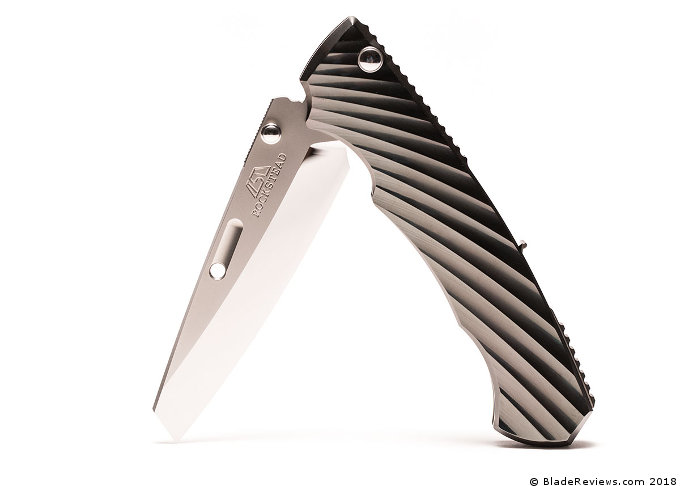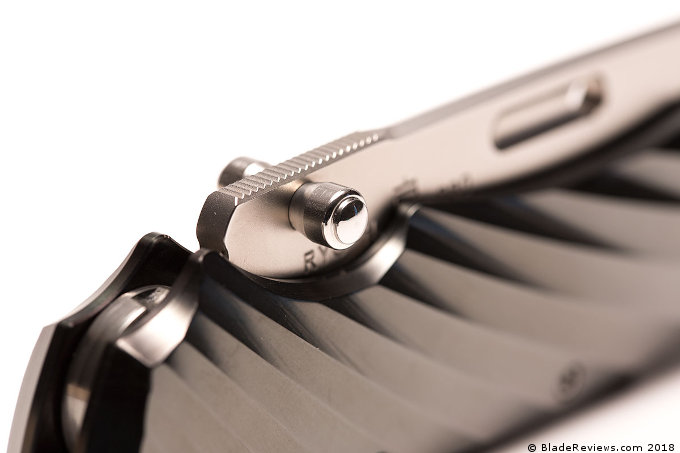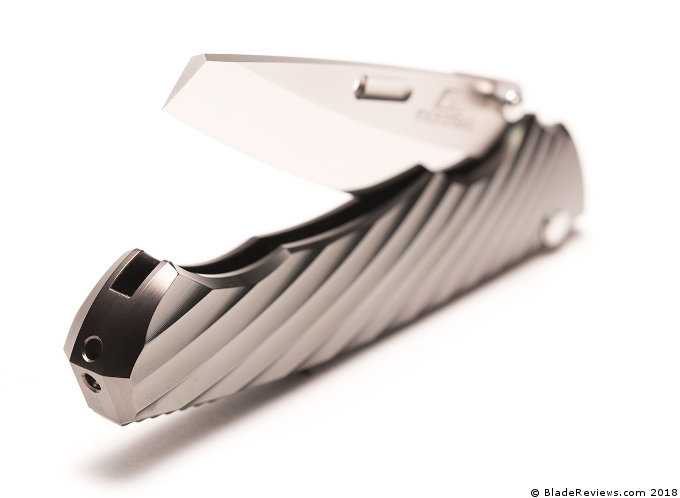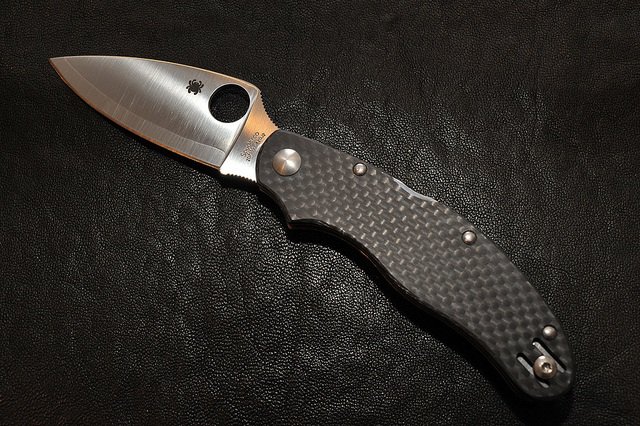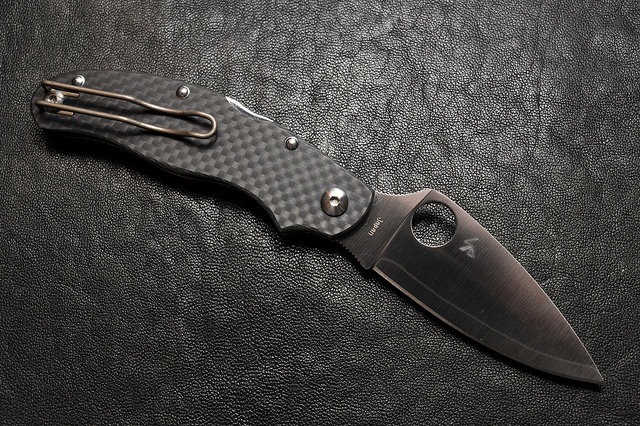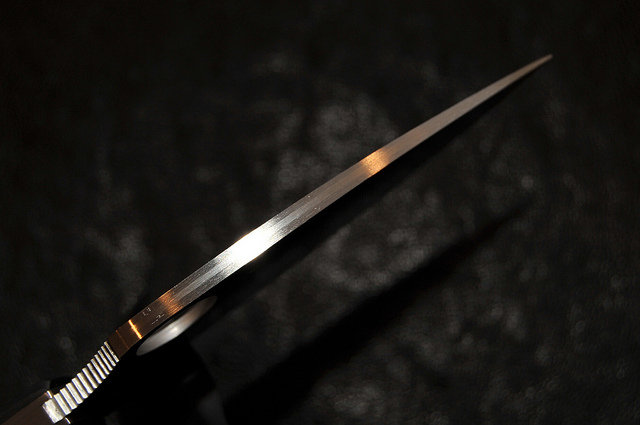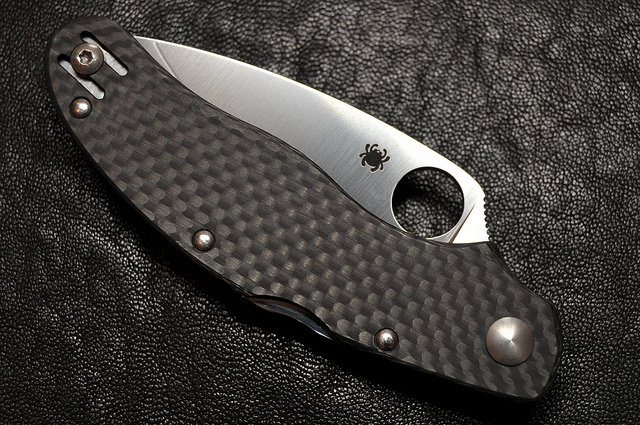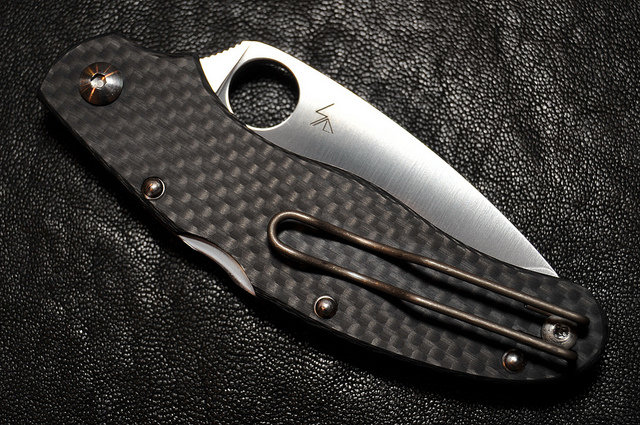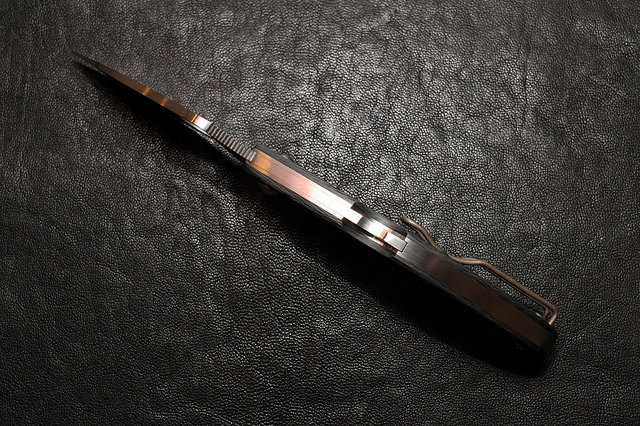The RYO is the latest folder from Rockstead, coming after their futuristic SHUN collaboration that was the work of Belorussian designer Dmitry Sinkevich. The SHUN was a tangent from the company’s previous aesthetic sensibilities, carrying much more futuristic lines in a larger form factor. Rockstead’s unmistakable mirrored blade grind and stylized fuller aside, the knife was definitely something more akin to other Sinkevich designs like the ZT 0452CF or his Shirogorov collaborations.
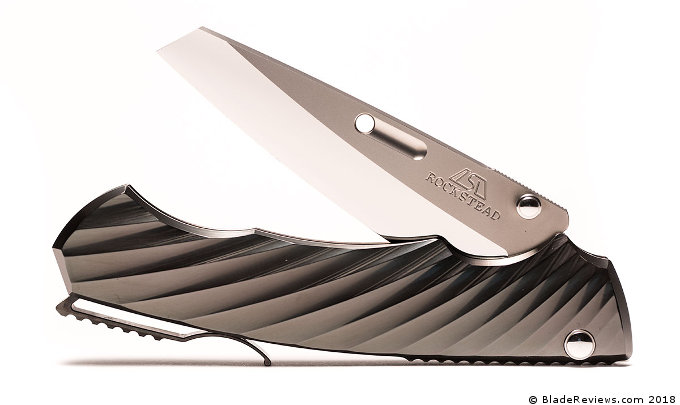
Buy Rockstead Knives at BladeHQ
The RYO design is a redirect back toward Rockstead’s other models, with a distinctly Japanese look that draws inspiration from an iconic friction folder. While most models reflect sword patterns, the RYO references the Higonokami (Higo for short) resulting in something similar to a modified wharncliffe, in Western cutlery terms. The blade shape is paired with an undulating handle texture reminiscent of waves, or in this case maybe black raku ceramics or “Japan Black” lacquerware. The name RYO translates to “good”. From my research it can be used to describe something of superior quality or character and is also used as a persons name.
As a side note, it might have been appropriate to call the RYO the HIGO however, Rockstead already has a knife named that. Although claiming the name, the model carries it in spirit only, and does not share a similarity in blade style.

General Dimensions and Blade Details
Although the Rockstead RYO has a foot in the past, it’s clearly a modern knife showing off a finished product that is only possible through a combination of modern machining and the latest high-tech materials. The over-all length measures 7.716” (196mm) with a 3.125″ (79mm) blade, and a weight of 4.37 oz (124 g).
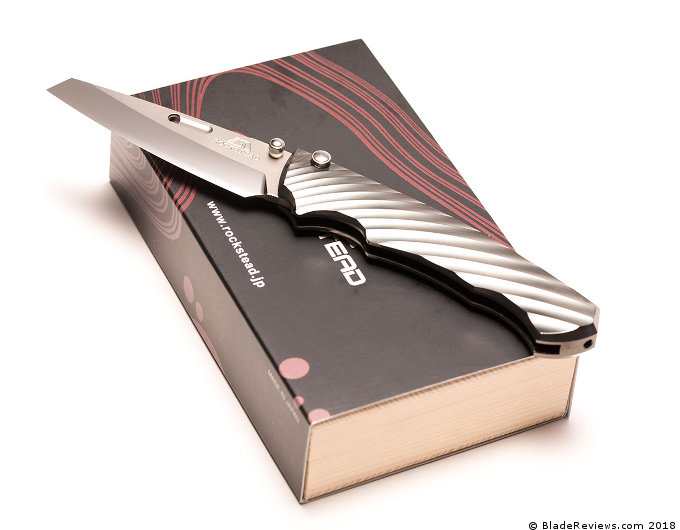
New to the folding knife collection, the RYO has a “concealable” clip design. We are also seeing a titanium handle, rather than the Duraluminum that’s has been used in the past. This isn’t that surprising as most of the newer, all metal handles (as seen in the SAI and SHUN) are full Titanium.
The 3.15” (80 mm) blade is made from one of Hitachi Metal’s flagship cutlery steels, ZDP-189. ZDP-189 boasts rather extreme specifications with a chromium content at 20%, nearly double the 10.5% needed to consider it a stainless, and a carbon content of 3%, just over four times the 0.7% needed to be classified as “high carbon”. The full specifications are as follows:
| Carbon | Chromium | Molybdenum | Tungsten | Vanadium |
| 3.00 | 20.00 | 1.50 | 1.50 | 0.10 |
Such impressive specifications are reached through a powder metal technology which helps to avoid the uneven (segregated) carbide micro-structure caused by cooling steel into a traditional ingot. During the process, molten alloy is pushed through a nozzle where it meets a high pressure stream of air. At contact with the compressed air, the molten metal rapidly solidifies creating a tiny, near-to segregation free, sphere-like particle. Because the cooling is so fast, the component elements are fixed in place with a more even micro-structure. The powdered batch is then mixed and sealed into inert-environment containers to avoid unwanted reactions. Finally it’s Hot Isostatically Pressed (HIP), trapping all of the ideal properties, evenly into place.
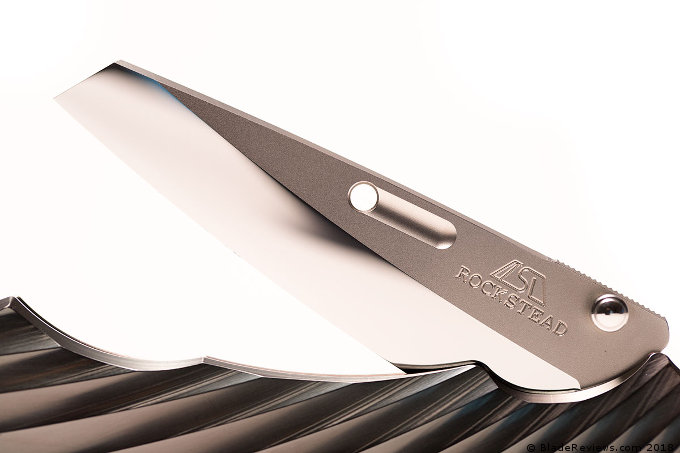
With such generous levels of elements that make for a high-performance steel, ZDP-189 is able to reach an incredible finished hardness and take an equally impressive edge. Rockstead measures each piece and the small dimple left from measurement is proudly displayed on the blades ricasso. The hardness of this particular RYO measures 67 RC.
While seemingly the end goal for a steel, the result does compromise other desirable attributes. The first is accessibility. Using ZDP-189 and finishing it to these standards increases cost. Secondly, such a high hardness makes the steel more brittle since it lacks any real ductility, limiting application to lighter duties.
This steel is chosen to support the grind, and as on all other Rockstead knives, the grind is nothing short of amazing. Rockstead defines the convex, zero geometry as Hon-zukuri which is traditionally reserved to describe sword patterns. The meaning loosely translates to “base style” and is Rockstead’s go to configuration. On other models they also offer flat grinds that include a secondary bevel as seen on the TEI-S DLC.
I’ve had the opportunity to handle three Rockstead knives and the mirrored finish is perfectly executed on all, only showing distortion from the curvature of the convex shape or on the compound angles that radius the belly of the blades. Because the mirrored finish runs right to the edge, the cutting performance is outstanding with a sharpness that seems to pass effortlessly while in use. This is partly because the blades are pretty much perfectly symmetrical and there isn’t any tooth to the edge that can catch on the material you’re cutting. While pretty legendary for a knife; as mentioned before the edge is fragile and it will micro-chip under normal use. This is where questions of practicality comes into play. Your flawless blade can be maintained – if you use Rockstead’s paid sharpening service. Otherwise you can do the job yourself at the expense of the perfect finishing.
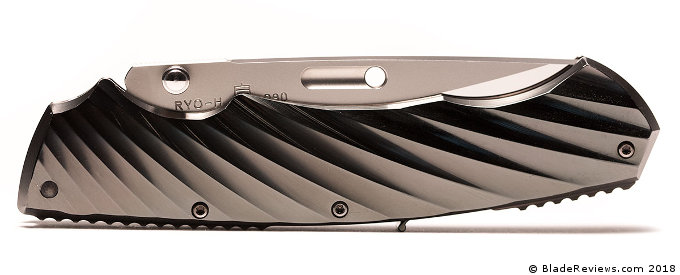
As for the profile, the Higonokami-like pattern is very useful. The slightly curved edge is excellent for everyday tasks while the tip excels at fine work over something like a drop-point. For detailing Rockstead’s stylized fuller gives the blade an animated, vigilant stare while the media blasted flats provide a contrast that intensifies the polished grind.
Handle, Ergonomics, and Pocket Clip
The fully sculpted “3D machined” handle of the knife is very comfortable. The inner edge has a series of shallow finger grooves that conform to your hand nicely. At 4.566” in length you get a full grip for average sized hands. The area of use is extended by a deep choil that meets a curve toward the front of the handle, allowing you to choke up for more control. Added grip and tactile feedback is helped along by jimping on the clip’s back and a double row of jimping along the handle’s spine that’s continued by a run onto the blade’s thumb pad. There’s also a small swatch on the choil so you know exactly where you’re at when your finger is near the heel of the edge. Jimping mission accomplished.
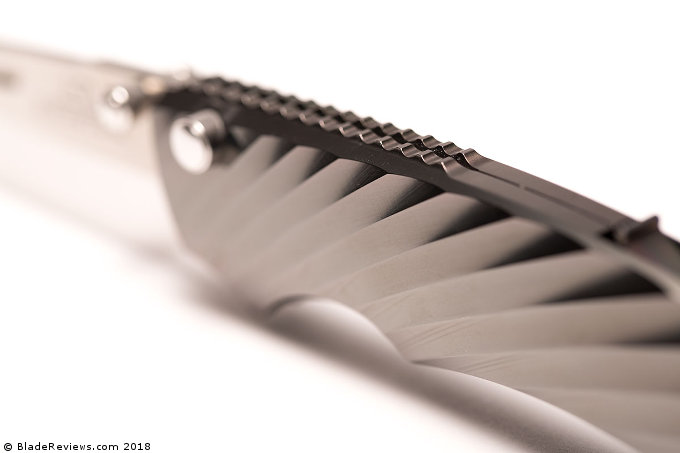
The cross cut ridges add a significant dress factor to the polished handle, catching the light and defining the overall form. As you hold the knife in your hand, highlights roll across the surface giving the grip a jewel-like appearance that’s amplified by the dark, glassy DLC (Diamond Like Carbon) coating. The same reflective qualities that give the handle its presence also create some challenges. With so many surfaces and such a tricky polish, any small marks or areas of unevenness during the process tend to be exaggerated by the DLC and under very close inspection, some are visible. This can only really be observed when the knife is spotlessly cleaned up and under good light as was the case when producing the video overview. Also, it’s an epic finger print magnet. From one perspective I’d like to see the handle as immaculately rendered as the blade and from the other I appreciate the ambition.
An area where I definitely feel the handle could be improved however, is weight. Milled out pockets on the inner scales could trim fat from the 4.37 oz. While this won’t bother some and others will equate weight with value, I prefer a lighter folder, and sub 4 oz would feel better with this smaller form factor.
For deployment there are two ambidextrous thumb-studs. While polished, they have a conical shape that narrows at the base, sit high and are exposed by a handle cut-out so you can easily and repeatably use them.
When opened the blade is held solidly by a button lock. Most button locks I’ve handled have a small tick of movement that eventually settles in, and this seems to be the case with the RYO. As of now, after handling the knife for some time, the lock-up feels totally solid and without play. Although seating confidently under significant spring tension, the action is smooth and without stickiness. When unlocking, the polished button head feels good under your thumb.
Normally, a button lock’s plunger serves double duty and is also used to hold the blade closed. In many cases the tension in the closed position is light allowing the blade to more easily fall out of the stowed position than something like a liner or frame lock. With the RYO, Rockstead has smartly added a separate detent that holds the blade closed, so the tension can be dialed in independently. As a small gripe, I’m not overly fond of the high pitch click the knife makes when overcoming the detent, but in a luxury item I tend to split hairs. Regardless of any criticism, the sum of parts of this button lock equals one the nicest I’ve handled to date.
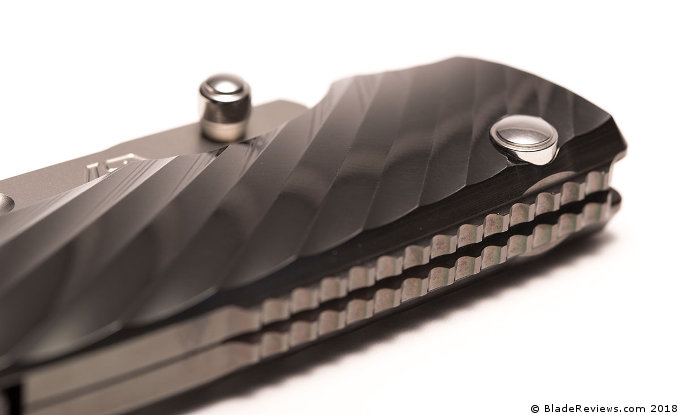
Rounding out the details there is what Rockstead calls their “concealable” pocket clip. This is primarily an ergonomic feature so you don’t feel the clip when cutting. The integration is nicely executed and works visually when the knife is both open and closed. To reveal the clip, you manually push on its end which sits slightly proud when hidden. Although the small tab is visible, you don’t really feel it under normal use. The clip sits on a larger base that supports it, for a smooth yet robust feeling action. Because the clip is oriented to the back of the handle, its attachment point is best at your pocket seam (as opposed to along the opening) and works better with thinner fabrics. The fact that the clip is machined rather than stamped and bent, makes for a strong tension and, because of the orientation, the knife can twist to the side with thicker materials. I guess this isn’t really a jogging pants type of knife anyway.
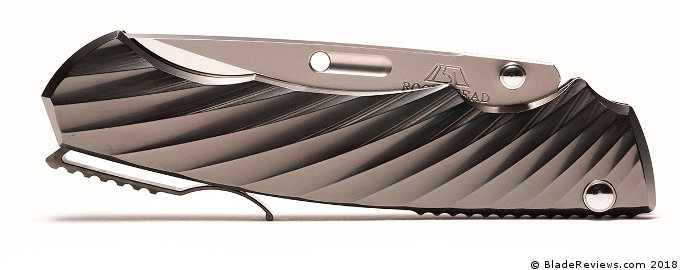
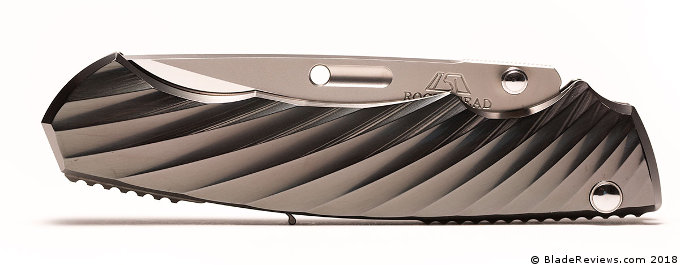
Apparently this concealable clip design infringes on a patent filed by knife maker Joseph Caswell, who has a design called the EDX with a clip that automatically changes position with the action of opening and closing the blade. As such Rockstead has had to license in order to stay above board. As an additional carry option there is a lanyard hole that is discretely milled into the pommel.
Rockstead RYO Review – Final Thoughts
From the material choices through to the finished functional design, Rockstead personifies the ethic of Japanese bladesmithing. An approach where there is a thirst for the best technology and materials while still respectfully integrating knowledge and concepts from the past in balanced measure. Rockstead’s ability to harmoniously combine historic patterns with contemporary features is unique to the brand. While costly, these knives are truly distinct, no small feat in a market that is increasingly more saturated. The RYO is certainly “good”.
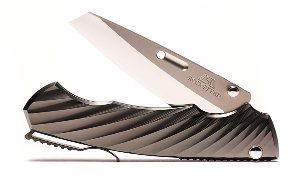
Rockstead Higo
From: BladeHQ
Editor: I recommend purchasing the Rockstead RYO at BladeHQ. Please consider that buying anything through any of the links on this website, including Amazon.com, helps support BladeReviews.com, and keeps the site going. As always, any and all support is greatly appreciated. Thank you very much.
